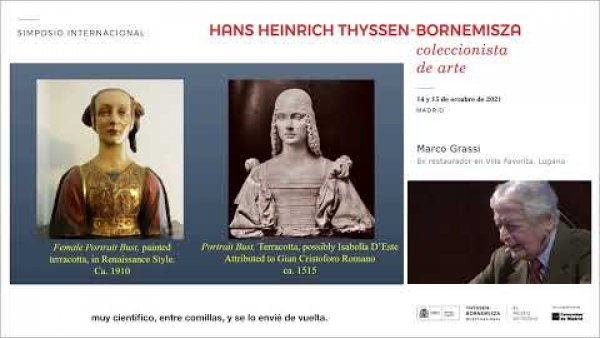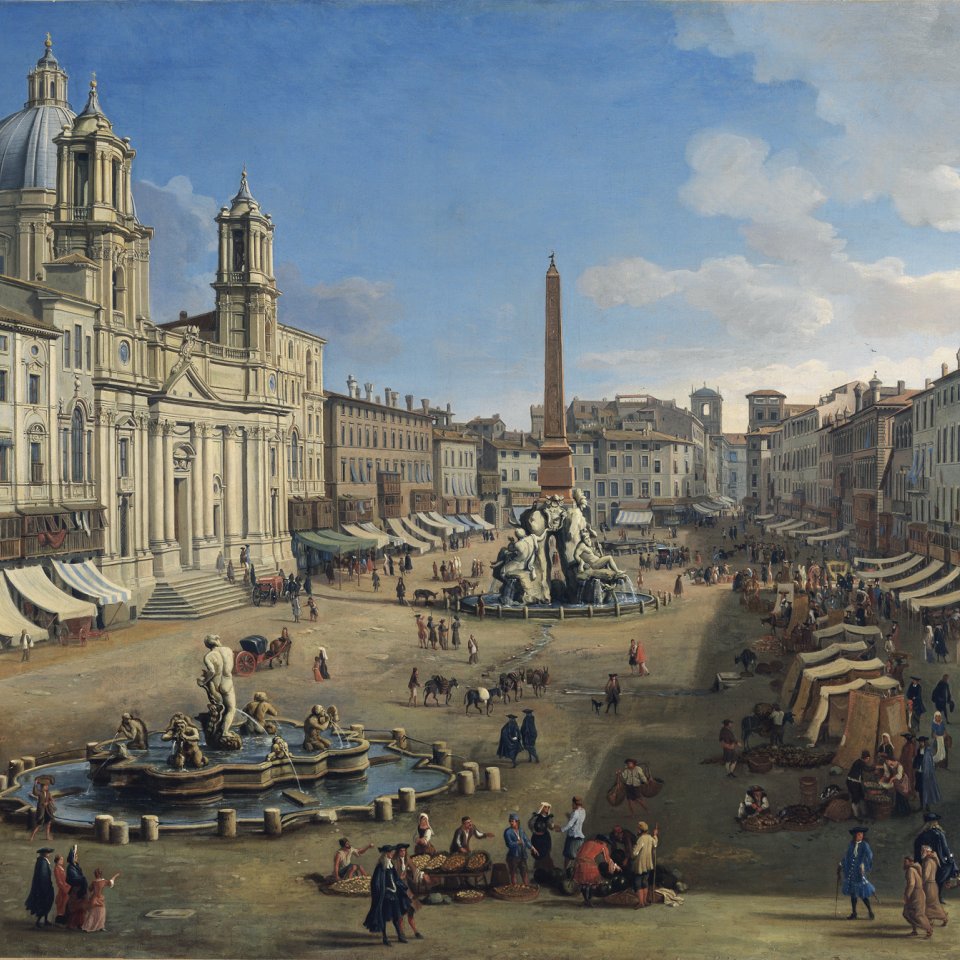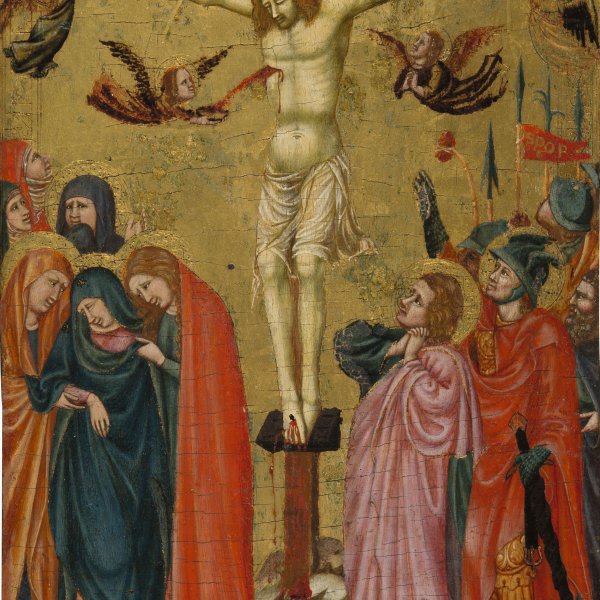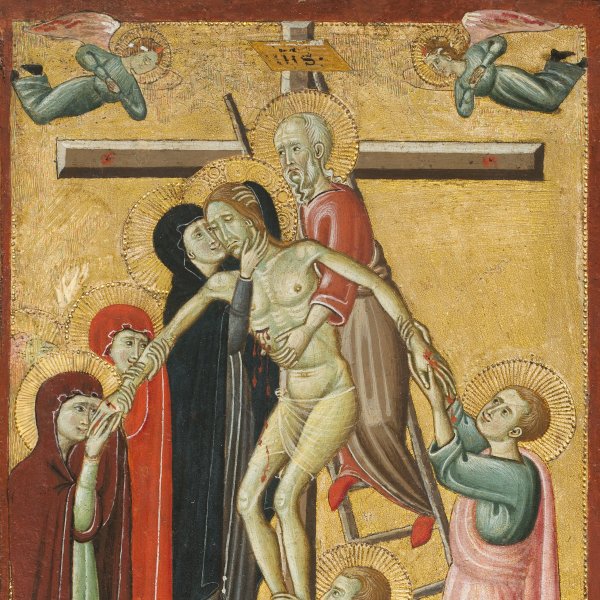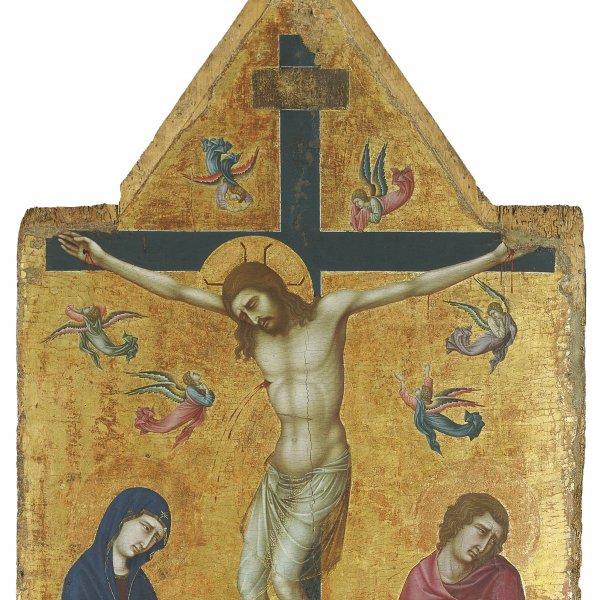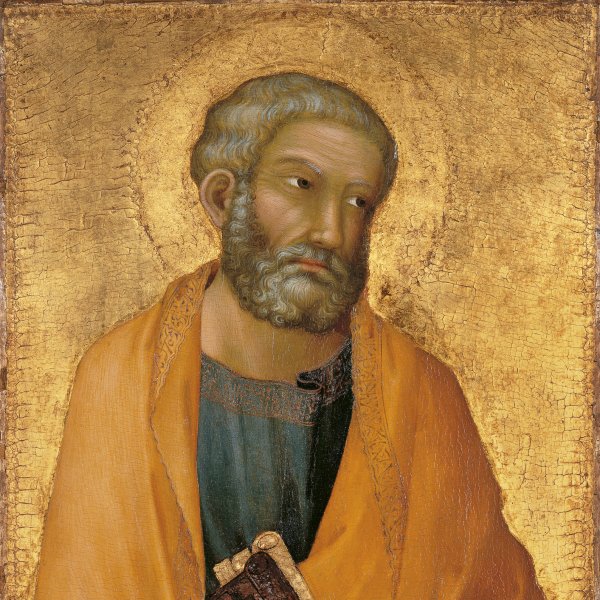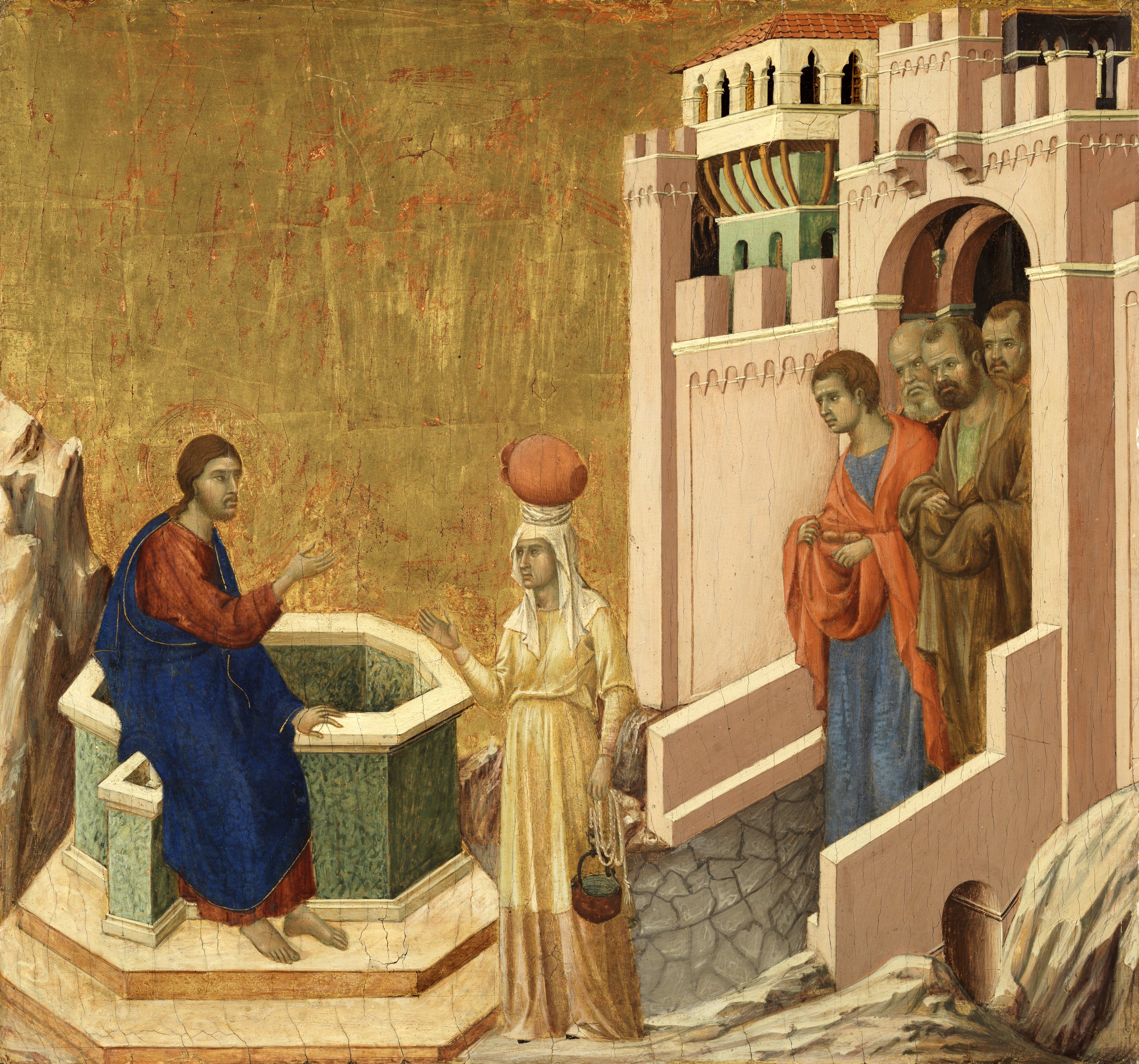Christ and the Samaritan Woman
This small panel was part of the predella of the Maestà, a commission executed by Duccio for the Duomo in Siena. The monumental double-sided altarpiece was dismantled around 1771, and while most of the panels are now in the Museo dell’Opera del Duomo (Siena), some were acquired by private collections and museums. In the one here, Christ—seated on Jacob’s well—is approached by the Samaritan woman, with a pitcher on her head, and engaged in a conversation conveyed through gestures. To the right, they are watched by a group of disciples placed in the architectural setting of the Samaritan town of Sychar, in an attempt to create spatial depth in the painting. The panel is early proof of the development of fourteenth-century art towards a more naturalistic approach, featuring a greater use of narrative discourse and a growing concern for the treatment of space.
During the 14th and 15th centuries Italian painting underwent a gradual transformation that distanced it from Byzantine formulas with the aim of exploring other figurative possibilities that would reach their peak of development in the early 16th century. Part of this transformation was brought about by two Tuscan artists: Giotto, in Florence, and Duccio, in Siena. Both broke away from the schematic, limited models of Byzantine painting and as a result introduced a new era in painting. The revolutionary change brought about by these two artists in their projects such as Giotto’s Bardi and Peruzzi chapels in Santa Croce, Florence, or Duccio’s Maestà in Siena cathedral, reveal the way they established the bases for a process that would continue to evolve from that point onwards.
A sense of narrative in their compositions, the location of the various elements in realistic spatial contexts, and a return to the imitation of nature as a source of inspiration were the principal innovations introduced by these two artists, and ones that laid the groundwork for a new type of painting.
Christ and the Samaritan Woman was one of the panels originally painted for the back of the predella of the monumental ensemble known as the Maestà, considered by John White to be “probably the most important panel painting ever produced in Italy”. This exceptionally large altarpiece, which according to hypothetical reconstructions was around 5 metres high, was commissioned from Duccio on 9 October 1308. It was delivered on 9 June 1311 and its completion was celebrated as a major event in the city. According to a contemporary chronicler, celebrations and a procession of civic and religious dignitaries accompanied the Maestà from Duccio’s workshop to the Cathedral. The painting remained in its original location from 1311 to 1506, at which point it was removed from the high altar to the transept where it remained until 1771, when it was dismantled and mutilated.
It would appear that the present panel, along with others from the same ensemble, was moved to the church of Sant’Ansano in Castelvecchio. It was included in an exhibition of 1879 held in the Palazzo Comunale in Colle di Val d’Elsa at which point it belonged to the collection of Giuseppe and Marziale Dini. It was exhibited as a pair with the panel of The Temptations of Christ, also originally from the back of the predella. In 1886 the present panel, along with three more, entered the collection of Robert and Evelyn Benson in London. On the sale of this collection the panel was acquired by the Duveen brothers in New York, then entered the John D. Rockefeller collection where it remained until 1971, the date it entered the Thyssen-Bornemisza collection.
Christ and the Samaritan Woman reveals a number of the innovations that made the Maestà one of the most revolutionary works of its day. Making use of the architectural structure and various rocky outcrops as the setting for the narrative, Duccio depicts an episode from the Gospel of Saint John. The story took place in the Samarian city of Sychar, depicted on the right. Four of the Apostles emerge from its Roman gate carrying the provisions they were sent to obtain. Seated on Jacob’s well, Christ talks with the Samaritan woman, a dialogue that Duccio depicts through their gestures. The painting reveals a detailed description of the setting and an effort on the artist’s part to locate the episode in a context that conveys a sense of spatial depth. The well with its steps, the depiction of the city of Sychar, the rocky road that leads from the city to the well, and the position of the pitcher on the woman’s head are all departures from Byzantine pictorial conventions. In this simple but effective composition the elegant, refined figures establish a relationship with their surroundings and also convey a sense of weight and volume. The use of gold in the background is echoed by the decorative gold lines on Christ’s tunic and cloak that outline the forms of the drapery. The modulation of the tones and the elegant combination of colours are particularly characteristic of Duccio’s work. His figures, with their delicate counterbalance of light and shade, highlights and saturated tones, introduce new chromatic possibilities. Elements such as the elegant figure of the Samaritan woman or the range of colours selected for the architectural elements perfectly convey the changes that Duccio introduced and which would be consolidated and disseminated by Simone Martini in the Trecento.
Mar Borobia
Emotions through art
This artwork is part of a study we conducted to analyze people's emotional responses when observing 125 pieces from the museum.

